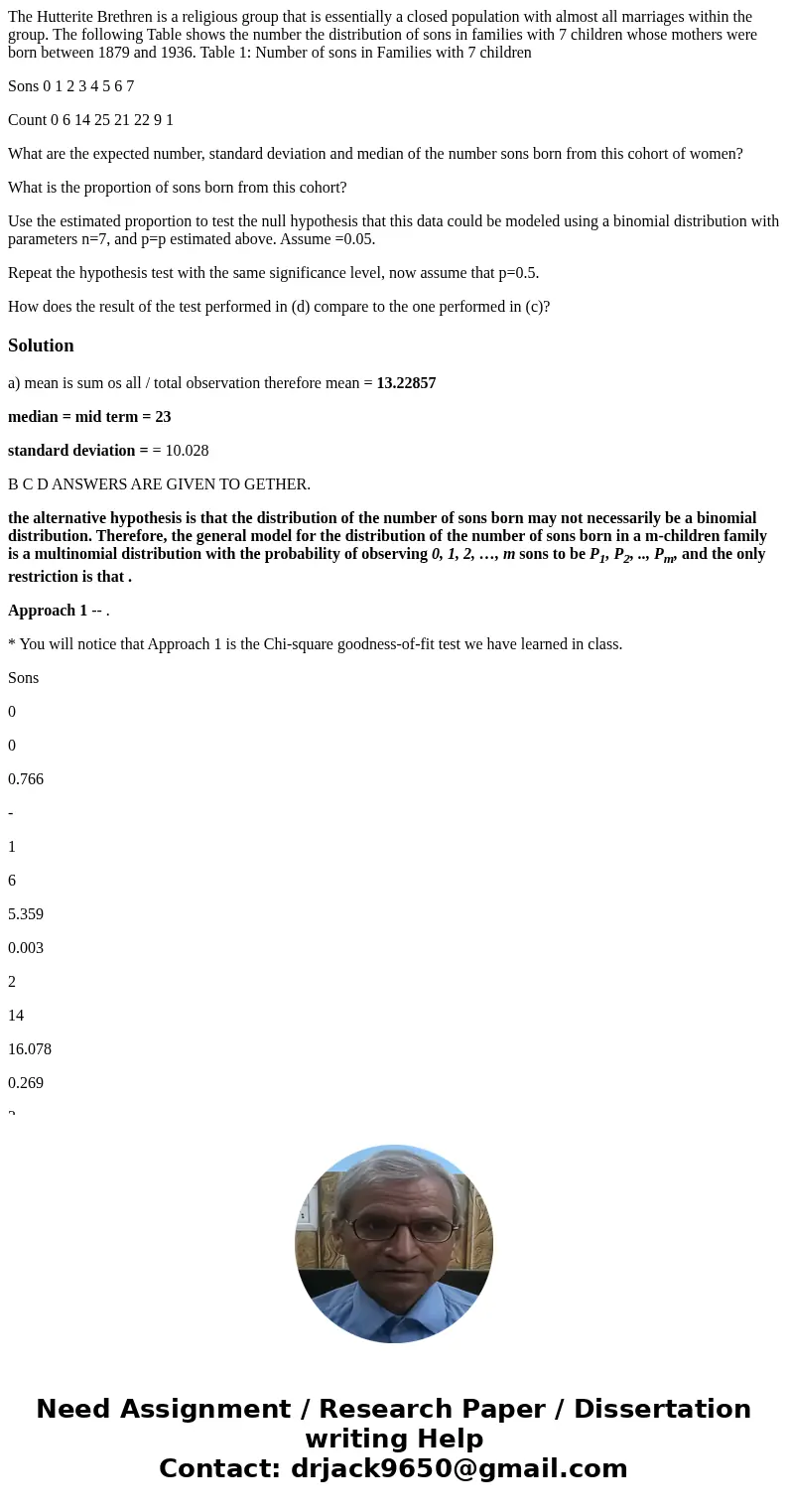The Hutterite Brethren is a religious group that is essentia
The Hutterite Brethren is a religious group that is essentially a closed population with almost all marriages within the group. The following Table shows the number the distribution of sons in families with 7 children whose mothers were born between 1879 and 1936. Table 1: Number of sons in Families with 7 children
Sons 0 1 2 3 4 5 6 7
Count 0 6 14 25 21 22 9 1
What are the expected number, standard deviation and median of the number sons born from this cohort of women?
What is the proportion of sons born from this cohort?
Use the estimated proportion to test the null hypothesis that this data could be modeled using a binomial distribution with parameters n=7, and p=p estimated above. Assume =0.05.
Repeat the hypothesis test with the same significance level, now assume that p=0.5.
How does the result of the test performed in (d) compare to the one performed in (c)?
Solution
a) mean is sum os all / total observation therefore mean = 13.22857
median = mid term = 23
standard deviation = = 10.028
B C D ANSWERS ARE GIVEN TO GETHER.
the alternative hypothesis is that the distribution of the number of sons born may not necessarily be a binomial distribution. Therefore, the general model for the distribution of the number of sons born in a m-children family is a multinomial distribution with the probability of observing 0, 1, 2, …, m sons to be P1, P2, .., Pm, and the only restriction is that .
Approach 1 -- .
* You will notice that Approach 1 is the Chi-square goodness-of-fit test we have learned in class.
Sons
0
0
0.766
-
1
6
5.359
0.003
2
14
16.078
0.269
3
25
26.797
0.120
4
21
26.797
1.254
5
22
16.078
2.181
6
9
5.359
2.452
7
1
0.766
-
Total
98
6.278
Note that cell 0 was combined with cell 1, and cell 7 was combined with cell 6, to satisfy the requirement that no cell can have and no more than 1/5th of the can be distribution with p=0.5 is a plausible distribution.
, so we couldn’t reject .
Approach 2 -- .
* Approach 2
is binomial vs. . Using
and
,
The results are summarized below :
Sons
0
0
0.492
1
6
3.893
0.595
2
14
13.203
0.048
3
25
24.874
0.001
4
21
28.119
1.802
5
22
19.072
0.450
6
9
7.187
0.327
7
1
1.161
Total
98
3.223
Note that cell 0 was combined with cell 1, and cell 7 was combined with cell 6, to satisfy the requirement that no cell can have and no more than 1/5th of the can be . Since , do not reject and conclude that the binomial distribution is a plausible distribution. This agrees with (a), since
| Sons | |||
| 0 | 0 | 0.766 | - |
| 1 | 6 | 5.359 | 0.003 |
| 2 | 14 | 16.078 | 0.269 |
| 3 | 25 | 26.797 | 0.120 |
| 4 | 21 | 26.797 | 1.254 |
| 5 | 22 | 16.078 | 2.181 |
| 6 | 9 | 5.359 | 2.452 |
| 7 | 1 | 0.766 | - |
| Total | 98 | 6.278 |


 Homework Sourse
Homework Sourse